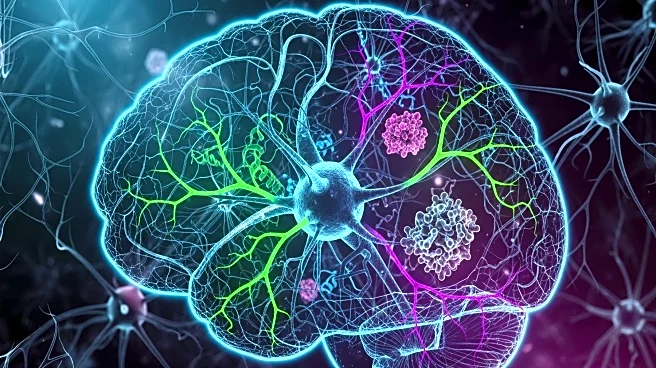What is the story about?
What's Happening?
Researchers at Aarhus University have developed a method to observe the behavior of a protein linked to Parkinson's disease, potentially advancing understanding of the disease's development. The study focuses on the protein α-synuclein, which normally aids cell communication but forms toxic structures in Parkinson's patients. These structures, known as oligomers, create dynamic pores in brain cell membranes, disrupting cellular balance. The research, published in ACS Nano, marks the first real-time observation of these pore dynamics, using a single-vesicle analysis platform. This platform allows scientists to track interactions between proteins and vesicles, offering insights into the molecular processes involved.
Why It's Important?
This discovery is significant as it provides a deeper understanding of the molecular mechanisms behind Parkinson's disease, which could lead to improved diagnostic and therapeutic strategies. The ability to observe pore formation in real-time offers a new avenue for drug screening, potentially accelerating the development of treatments. Early detection of oligomers could be crucial, as Parkinson's is often diagnosed after significant neuronal damage. The study's findings may also inform future research on how these toxic structures affect mitochondrial membranes, possibly pinpointing the initial stages of cellular damage.
What's Next?
The next steps involve replicating these findings in biological tissues to understand the complex interactions in living cells. Researchers aim to explore how these oligomers behave in more realistic environments, which could lead to breakthroughs in early diagnosis and treatment. The study also opens possibilities for testing nanobodies as diagnostic tools, although their effectiveness in blocking pore formation remains uncertain. Continued research may focus on identifying specific membrane types affected by oligomers, potentially leading to targeted therapies.
Beyond the Headlines
The study highlights the importance of understanding protein dynamics in neurodegenerative diseases, which could have broader implications for other conditions involving protein aggregation. The research underscores the potential of advanced molecular tracking techniques in uncovering disease mechanisms, paving the way for innovative approaches in medical research.
AI Generated Content
Do you find this article useful?














